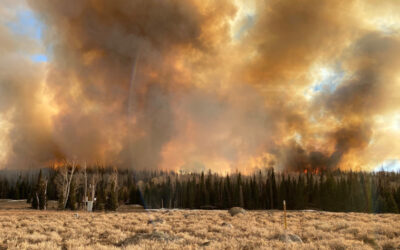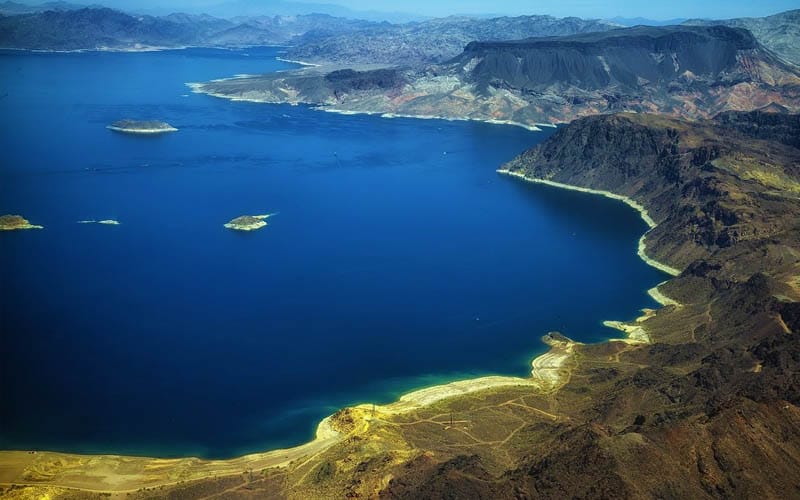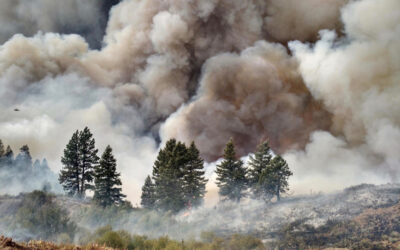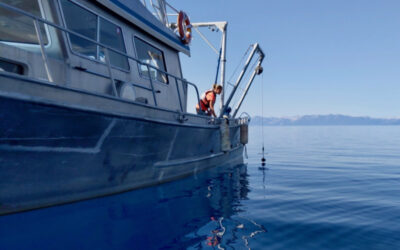News & Announcements
Working to Solve our Most Challenging Environmental Problems
DRI’s research calls on the expertise and methods of scientists from multiple scientific disciplines. More than 600 highly-skilled scientists, engineers, technicians, students, and staff work collaboratively within and across three research divisions, focused on understanding and answering critical science questions about global climate change, water quality and availability, air quality, the sustainability of desert lands, life in extreme environments, education, and more.
DRI Taps Seasoned Development Executive to Lead Nationwide Environmental Fundraising Efforts
DRI is proud to welcome long-time education fundraising professional Kristin Ghiggeri Burgarello, who will serve as Director of Advancement.
Philippe Vidon, Ph.D. Appointed to Lead DRI’s Division of Earth and Ecosystem Sciences
DRI announced that Philippe Vidon, Ph.D., has been selected to lead the Institute’s Division of Earth and Ecosystem Sciences, which conducts high-quality basic and applied research in the life and Earth sciences, particularly those dealing with the complex interactions of geological processes, organisms, biological communities, and human societies on the Earth’s surface.
New Study Points to Increase in High-risk Bushfire Days in Australia
Victoria, Australia is already one of the most bushfire-prone areas in the world, and the number of high-risk days may triple by the end of the century, according to a new study in the International Journal of Wildland Fire that features work by DRI climatologist Tim Brown, Ph.D.
Nevada receives $550,000 to enhance wildfire smoke air quality monitoring technologies, public messaging in rural communities
The Nevada Division of Environmental Protection (NDEP) and Desert Research Institute (DRI) are excited to announce a new partnership program that will expand wildfire smoke air quality monitoring infrastructure and public information resources for rural communities across the state.
Senator Cortez Masto, Representatives Huffman, Lee, and Stewart Introduce Bicameral, Bipartisan Legislation to Transform Water Management in the West
U.S. Senator Catherine Cortez Masto (D-Nev.) today introduced legislation to get critical water use data in the hands of farmers, ranchers, and decision-makers for improved water management across the Western U.S.
Meet Alison Swallow, DRI’s 2021 Technical Employee of the Year
The recipient of DRI’s 2021 Technical Employee of the Year Award is Alison Swallow, the Project Coordinator for DRI’s Office of External Affairs and Communications. Get to know Alison in this Q&A!
In Memory of Thomas Gallagher
It is with deep sadness that we share the passing of Tom Gallagher, our dear friend and four-term Trustee, leader, and passionate supporter of DRI and the DRI Foundation.
DRI Scientist Contributes to New Research on Toxic Mercury Deposition in Forests
Mercury is deposited from the atmosphere into forests worldwide in greater quantities than previously thought, according to new research led by former Desert Research Institute (DRI) scientist Daniel Obrist (currently with University of Massachusets, Lowell) and a team that included Hans Moosmüller of DRI in Reno.
New DRI Study Investigates Formation of Dangerous Compounds by E-cigarettes
Scientists with the Desert Research Institute (DRI) Organic Analytical Laboratory, led by Andrey Khlystov, Ph.D., have been awarded a $1.5M grant from the National Institutes of Health (NIH) to study the formation of dangerous compounds by electronic cigarettes (e-cigarettes).
Wildfire Smoke Exposure Linked to Increased Risk of Contracting COVID-19
Wildfire smoke may greatly increase susceptibility to SARS-CoV-2, the virus that causes COVID-19, according to new research from the Center for Genomic Medicine at the Desert Research Institute (DRI), Washoe County Health District (WCHD), and Renown Health (Renown) in Reno, Nev.
Rosen Applauds Over $500,000 Awarded to Desert Research Institute to Mitigate Risk of Wildfire Smoke in Rural Communities
News release reposted from Senator Jacky Rosen. WASHINGTON, D.C. –U.S. Senator Jacky Rosen (D-NV) released the following statement applauding the Environmental Protection Agency (EPA) for awarding a grant totaling $544,763 to the Desert Research Institute...
2020 Lake Tahoe Clarity Report: Trends Holding but Threats Remain
Lake Tahoe, CA/NV (July 8, 2021) – Lake Tahoe’s water clarity measurements, which are indicators of the health of the watershed, averaged 62.9 feet through 2020, the UC Davis Tahoe Environmental Research Center and the Tahoe Regional Planning Agency announced today.










